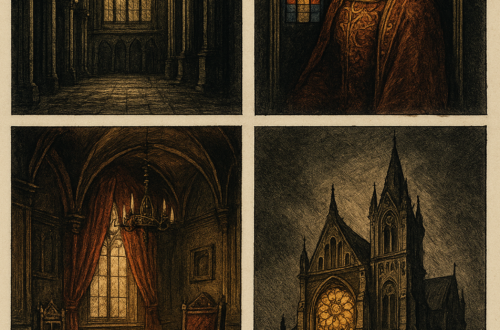By: Rachel D. Knepp

In the ever-evolving world of interior design, technology is playing an increasingly pivotal role, and at the forefront of this change is artificial intelligence (AI). From automated processes to personalized design suggestions, AI is transforming how spaces are conceptualized, planned, and brought to life. The intersection of technology and creativity is reshaping the interior design landscape, enabling designers to harness AI’s capabilities to push their ideas further and deliver more innovative, functional, and personalized spaces.
AI’s Influence on the Design Process
Traditionally, interior design has relied heavily on the designer’s vision and manual planning to create layouts, choose materials, and define the aesthetic of a space. However, AI tools are now assisting designers at various stages, from conceptualization to execution. One of the most exciting innovations is AI-driven design platforms that use algorithms to help designers generate floor plans, furniture arrangements, and color schemes that are tailored to client needs.
For instance, AI can analyze the dimensions of a room, suggest optimal furniture layouts, and offer solutions that balance both aesthetics and functionality. By using machine learning to interpret vast datasets of past designs, AI can recommend ideas that align with both the client’s preferences and practical requirements. This is especially useful for small or complex spaces where traditional design methods may fall short. The result? More efficient workflows and endless creative possibilities.
AI’s Ability to Personalized Interior Design at Scale
One of AI’s greatest strengths in interior design is its ability to personalize spaces at scale. In an age where clients seek unique, tailor-made environments, AI can quickly analyze user preferences to generate highly customized design proposals. Platforms like Planner 5D or Modsy allow users to visualize their spaces in 3D, experimenting with layouts, furniture, and decor, all guided by AI’s data-driven suggestions.

This trend has also sparked the rise of AI-powered interior design apps where clients can upload photos of their space and receive instant design recommendations based on current trends, personal style, and even budget constraints. These tools democratize the design process, allowing more people to access personalized interiors, and providing designers with real-time feedback on their concepts. AI transforms what was once a time-consuming process into a more dynamic, interactive, and user-centric experience.
AI and Sustainable Design Solutions
Sustainability is becoming increasingly crucial in modern interior design, and AI is proving to be a valuable asset in this realm. AI algorithms can help designers make environmentally conscious choices by analyzing data on materials, energy efficiency, and the environmental impact of different design elements.
For example, AI tools can suggest eco-friendly materials for flooring, furniture, or wall treatments, as well as recommend energy-efficient lighting solutions. Furthermore, AI can predict how a space’s layout and materials will affect energy consumption, enabling designers to make decisions that reduce environmental footprints without compromising on style.
Incorporating AI-driven sustainability doesn’t just benefit the environment—it can also enhance the long-term functionality of a space. By predicting wear and tear or analyzing how natural light flows through a room, AI allows designers to create spaces that are both beautiful and durable.
AI-Driven Augmented and Virtual Reality
AI-powered augmented reality (AR) and virtual reality (VR) are revolutionizing how interior designers and clients interact with spaces before they even exist. Designers can now create immersive 3D environments that allow clients to “walk through” their future space, experimenting with different layouts, textures, and color schemes in real time. AI enhances this experience by offering real-time suggestions, adjusting designs based on user feedback, and optimizing spatial configurations.

This technology significantly enhances client communication. Instead of relying solely on mood boards or 2D renderings, clients can experience a lifelike representation of their future space, allowing them to make more informed decisions and reduce potential misunderstandings. AI’s integration into AR and VR tools streamlines the design approval process, reducing the back-and-forth revisions and improving client satisfaction.
Efficiency and Time-Saving Benefits
One of AI’s most practical benefits in modern interior design is its ability to increase efficiency. From automating repetitive tasks like drafting layouts to generating real-time cost estimates, AI tools are freeing up valuable time for designers to focus on the more creative aspects of their work.
AI can also optimize project timelines by managing schedules, predicting potential delays, and providing alternate solutions to logistical issues. With AI-driven project management tools, interior designers can ensure that projects stay on track and within budget, leading to smoother and faster design execution.
AI and Creative Inspiration
Far from replacing human creativity, AI acts as a source of inspiration for many interior designers. By analyzing a wealth of historical and contemporary design trends, AI can propose unique combinations of styles, textures, and layouts that may not have been immediately obvious. This ability to think “outside the box” opens the door to more daring and innovative designs.
For example, AI platforms can take a client’s preference for mid-century modern furniture and combine it with more contemporary materials and color palettes, resulting in a fresh and unique design fusion. These AI-generated suggestions serve as a starting point, allowing designers to explore new creative directions while maintaining control over the final aesthetic.
The Ethical Considerations of AI in Interior Design
As AI becomes more integral to the interior design process, ethical questions arise. Should an AI-driven tool make final design decisions, or should human intuition remain at the forefront? While AI can predict trends and suggest layouts, the emotional and psychological impact of design—how a space makes someone feel—is still something that requires a designer’s personal touch.
Additionally, designers need to be cautious of the biases AI may inherit from the datasets it’s trained on. AI tools may inadvertently perpetuate limited design perspectives, overlooking culturally diverse or unconventional styles. Designers must ensure they are using AI ethically by combining its efficiency with a broader, more inclusive understanding of aesthetics and client needs.
The Future of AI in Interior Design
The future of interior design will undoubtedly see AI playing an even greater role, but always in collaboration with human creativity. We can expect to see further integration of AI in areas like material selection, with tools that suggest biodegradable or recyclable options, as well as more sophisticated AR and VR capabilities that provide hyper-realistic design visualizations.
As AI continues to evolve, it will empower designers to be more efficient, experimental, and client-focused. However, the magic of interior design will always lie in the delicate balance between technology and human insight—where designers interpret and personalize the suggestions AI offers, crafting spaces that resonate on a deeper level.
Conclusion: AI as a Creative Ally
At the intersection of technology and creativity, AI is reshaping the world of interior design in profound ways. While AI provides powerful tools for efficiency, personalization, and innovation, the heart of design still lies with human creativity. By embracing AI’s capabilities, interior designers are pushing the boundaries of what’s possible, creating spaces that are more functional, sustainable, and aesthetically exciting than ever before. The future of interior design lies in this harmonious blend, where technology enhances, rather than replaces, the human touch in crafting beautiful and meaningful spaces.


